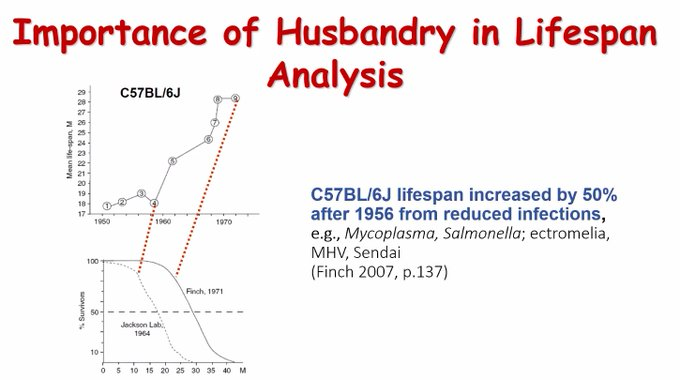
I'm often asked how to learn about #AgingBiology, which I hope this thread can address.
Will first list recommended introductory resources, then contextualize and interpret.
There's exciting progress! But also many fanciful ideas, so you can't take everything at face value.
Will first list recommended introductory resources, then contextualize and interpret.
There's exciting progress! But also many fanciful ideas, so you can't take everything at face value.
Will mostly skip the Why/philosophy of #AntiAging, since those asking for resources are likely already bought in.
If interested I wrote a Why/Why not post back in 2016: martinborchjensen.com/hypotheses/agi…, and most of the websites I'll list have a version of this discussion too.
If interested I wrote a Why/Why not post back in 2016: martinborchjensen.com/hypotheses/agi…, and most of the websites I'll list have a version of this discussion too.
The most comprehensive #Aging primer is @ArtirKel's FAQ: nintil.com/longevity.
It does a great job of introducing the field, and distilling the science for non-biologists. Bonus points for contextualizing how biology is different from engineering.
It does a great job of introducing the field, and distilling the science for non-biologists. Bonus points for contextualizing how biology is different from engineering.
@LauraDeming's FAQ has a great list of interventions that extend #Lifespan in mice (@justsaysinmice go ahead), and their clinical stage: ldeming.com/longevityfaq.
Note that mice are not humans! And some of these studies haven't been independently replicated. Still, exciting data!
Note that mice are not humans! And some of these studies haven't been independently replicated. Still, exciting data!
@LifespanIO also has a great overview of clinical trials for drugs that likely target #AgingMechanisms: lifespan.io/road-maps/the-…
Note that, in my opinion, many of these are going to fail. Some because fanciful drugs/poor execution, some because clinical trials fail.
Note that, in my opinion, many of these are going to fail. Some because fanciful drugs/poor execution, some because clinical trials fail.
@KarlPfleger has the best overview of #Biotech companies working on #AgingBiology (explicitly or de facto): agingbiotech.info/companies/.
He includes publicly available information on company stage, product, key people, and summary statistics across companies.
He includes publicly available information on company stage, product, key people, and summary statistics across companies.
@jpsenescence's senescence.info has both general info and large databases, including human+animal #Aging genes, #AgeRelated changes, & more.
Great resource, but less accessible as intro to field. I recommend non-biologists especially start with the resources above.
Great resource, but less accessible as intro to field. I recommend non-biologists especially start with the resources above.
If you prefer audiovisual learning, @EleanorSheekey has a great YouTube channel with sober, scientific coverage of new papers and topics in #AgingBiology: youtube.com/channel/UCJKl7…
[Part 2 to come]
OK, let's add nuance.
Most importantly, understand that #Biology is full of nonlinear effects.
Text- & #PopSci books may have you thinking biology works as in left pic below. The reality (of one pathway) is 10x more complex than the right pic, incl. lots of circular feedback.
Most importantly, understand that #Biology is full of nonlinear effects.
Text- & #PopSci books may have you thinking biology works as in left pic below. The reality (of one pathway) is 10x more complex than the right pic, incl. lots of circular feedback.

Non-linear interactions means that results are often context-specific. A protein will kill one cell type and protect another. Nothing is "better" or "worse", but shift a system in a way that may be desired.
#Aging is a complex system to tune, not a single pathway to turn down.
#Aging is a complex system to tune, not a single pathway to turn down.
You'll quickly run into the Hallmarks of Aging. Know that unlike the Hallmarks of Cancer that inspired them, they are each neither essential nor sufficient for an aged state. Consider them an overview of what's predominantly being studied in the field, not a definition of #Aging. 

Even the word "aging" is used with different meanings. Neither 'aging means senescent cells' nor 'aging means frailty' is wrong, but a solution to one of these doesn't necessarily apply to the other. Notice the context to determine which meaning applies.
https://twitter.com/MartinBJensen/status/1358820226440200202?s=20
• • •
Missing some Tweet in this thread? You can try to
force a refresh








